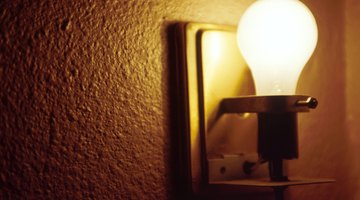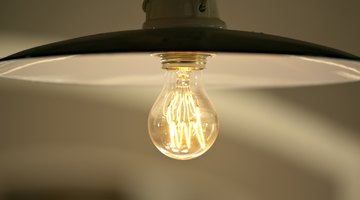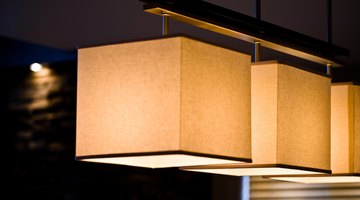What Are the Dangers of Using the Wrong Wattage for Light Bulbs?
Table of Contents
On light fixtures, a sticker specifies the maximum light bulb wattage acceptable. You can use an incandescent light bulb with a lower wattage than specified, but using a higher wattage is dangerous.

Heat

Incandescent light bulbs produce heat in addition to light, and heat output increases with wattage.
Light Fixtures

Because of the heat generated, using a light bulb with a higher wattage than specified may cause the light fixture to overheat. Overheating damages the fixture and may melt the socket holding the light bulb, causing a fire.
Wiring

The wiring inside the light fixture may become brittle due to the heat from a bulb with wattage exceeding the specifications. In some cases, especially when wires inside walls and ceilings are affected, fires occur.
Enclosed Fixtures

Using light bulbs with the wrong wattage inside enclosed light fixtures, such as glass globes or wall sconces, increases the risk of damage or fire because the heat is less able to dissipate in the enclosed area.
Compact Fluorescent Bulbs

If you want a higher light output than your fixture allows, consider a compact fluorescent bulb (CFL). For example, in a fixture with a 60 watt maximum capacity, you can use a 42 watt CFL, producing the equivalent light of a 150 watt incandescent bulb.
References
Writer Bio
Maelin McCartney began writing professionally in 2010. She holds undergraduate degrees from Hastings College in health and developmental psychology, family studies psychology, personality and social psychology and sociology with an emphasis in criminal justice. She is currently pursuing a master’s degree in counseling at Doane University.
Photo Credits
- Ingram Publishing/Ingram Publishing/Getty Images
- Ingram Publishing/Ingram Publishing/Getty Images
- AlexPitt/iStock/Getty Images
- Jupiterimages/Photos.com/Getty Images
- Ingram Publishing/Ingram Publishing/Getty Images
- DAJ/amana images/Getty Images
- Travis Manley/Hemera/Getty Images
More Articles
- How to Troubleshoot a Halogen Lamp
- What Happens When a Light Bulb Burns Out?
- What Is the Difference Between Electronic Ignition & Pilotless Electronic Ignition?
- How to Change the Bulb in Low-Voltage Lighting
- How to Clean Japanese Lacquerware
- What Is the Difference Between an R20 Bulb & a PAR20 Bulb?



